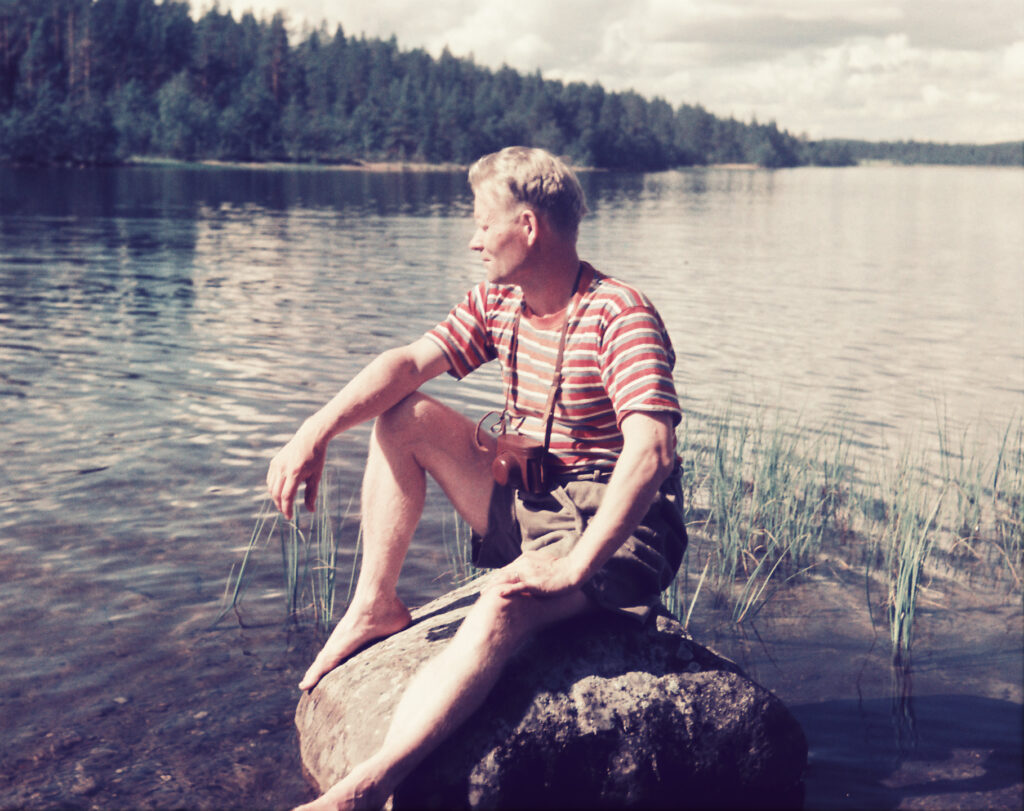Bringing out the Koillismaa emerging from the war and promoting its affairs became the main task of Rinne’s Koillissanomat. The Great Partition started in Kuusamo was a giant project, as was the settlement of the emigrants and the construction of road connections. Cultural and sports activities also needed attention in the local newspaper.
In the 1950s, one of the questions that attracted the most public attention in Kuusamo was the harnessing of local hydropower as a source of energy. In 1959, Reino Rinne took a stand emphasizing nature conservation on this issue, prominently bringing out the demand for the preservation of Kuusamo’s rapids’ natural state in his Koillissanomat column. Soon, Reino Rinne and Koillissanomat were key influencers in the dispute that became nationally known as the Kuusamo “The Rapids War”, whose opposing sides were nature conservation and technical-economic values.
With the Rapids War, Rinne’s perspective on nature conservation expanded and he himself developed into a critical journalist who took a strong stand on forest use, agricultural emissions, the disadvantages of expanding tourism and many other projects that harm nature. His most important instrument in this influence was Koillissanomat. He had to step down from the position of editor-in-chief of the magazine he founded in 1968 and became a freelance writer again.
A new page in Reino Rinne’s life and his literary activity was opened by Give Me an Atomic Bomb (1970), published by Alea. In his poem, he asked his father for an atomic bomb to blow the old world to pieces so that a new one could be built on the ruins. This ironic distress call addressed to the heavenly father appeared to him as the only possibility to break free from old habits of thought to a balance between man and nature. For his work, Rinne received the State Literature Prize in 1971.
In the same utopian-futuristic line emphasizing the northern perspective, Reino Rinne continued his production for twenty years. In some of his works, he praised the natural views of Koillismaa, in others he brought out the nobility of people displaced by the mainstream of life, building imaginary visions of simple happiness in life in a few of his “uforisms”.
He self-published most of his late production in the margins of literature, thus being able to maintain his distinctive expression, where playful humour and serious reflection go hand in hand.
Literature:
Leskelä, Elli, Reino Rinne. Nuoruus ja vaellusvuodet. Kuusamo 1989.
Sillanpää, Pertti, Aatos, eetos ja paatos. Reino Rinteen pohjoinen puheenvuoro ympäristökeskusteluun. Vaajakoski 2006.
